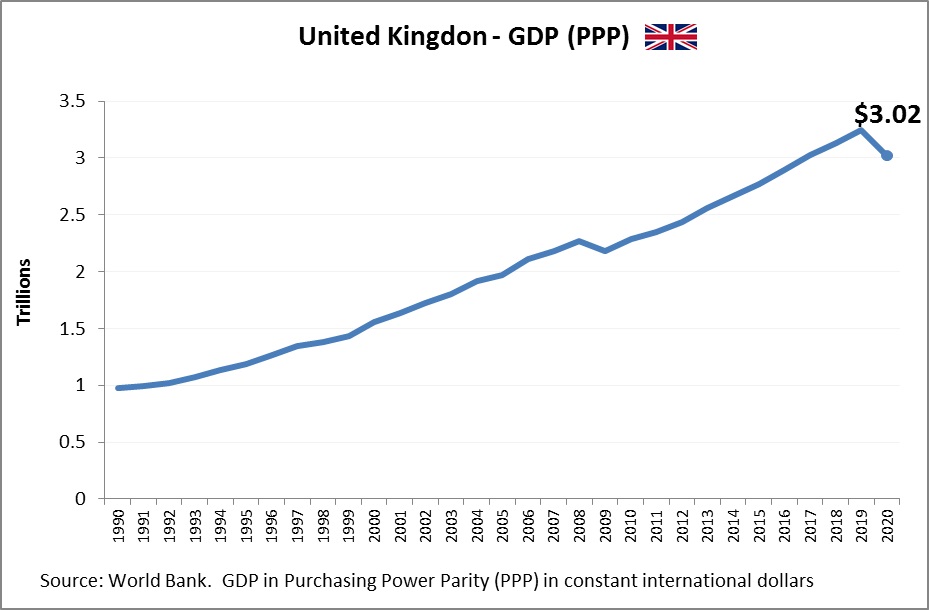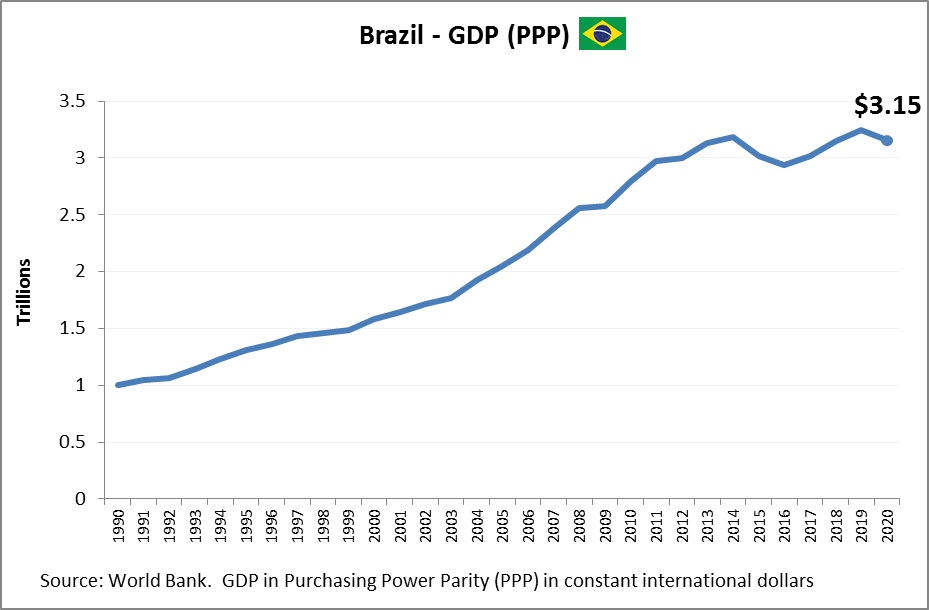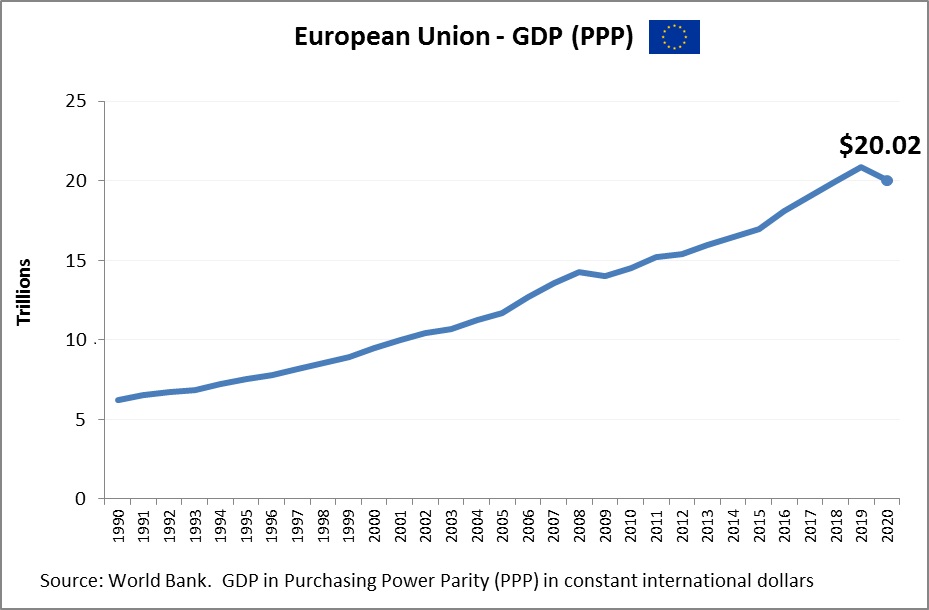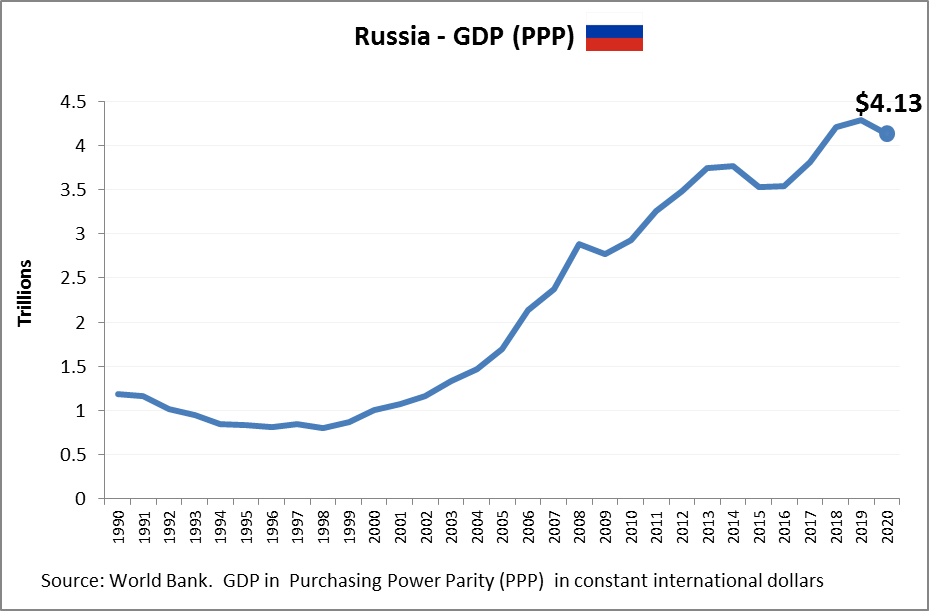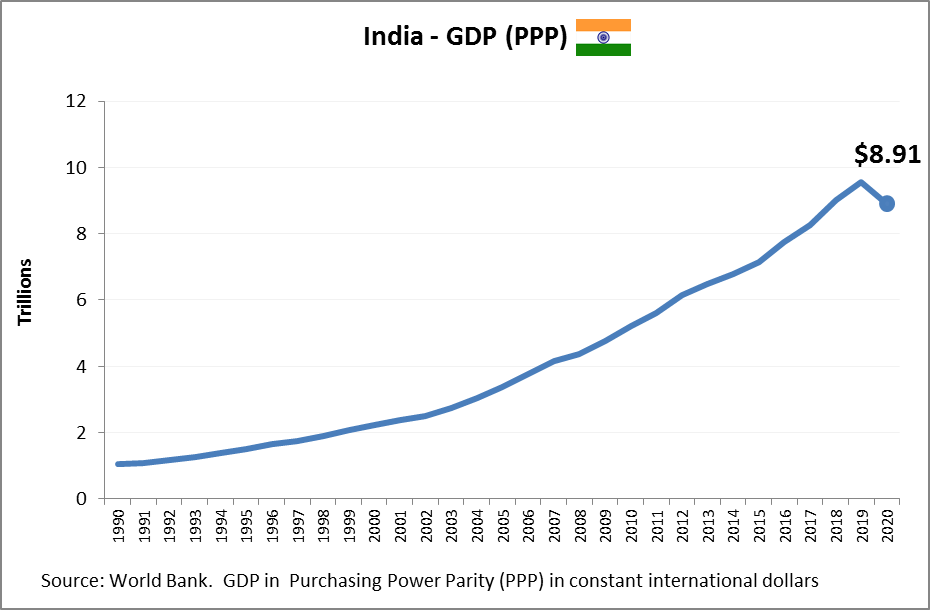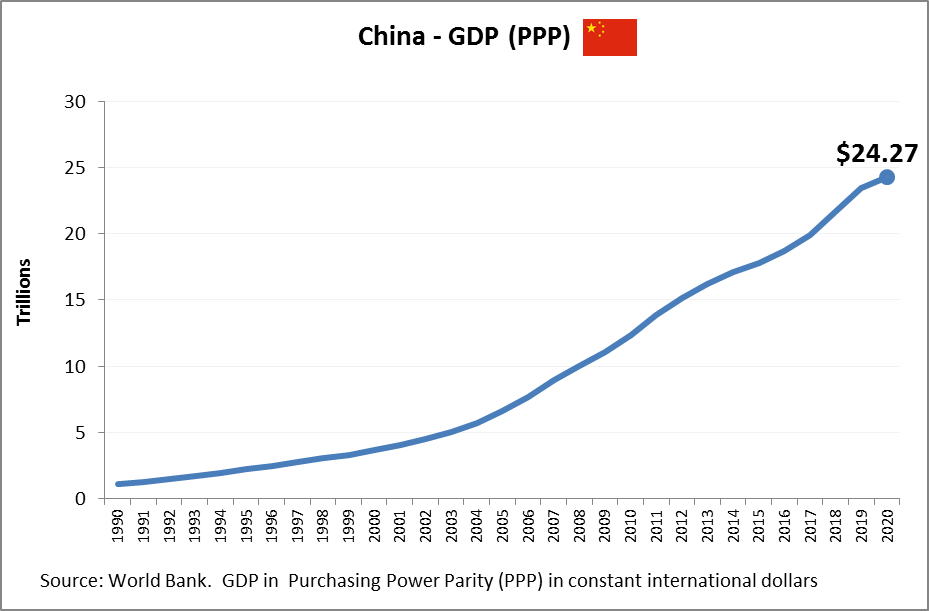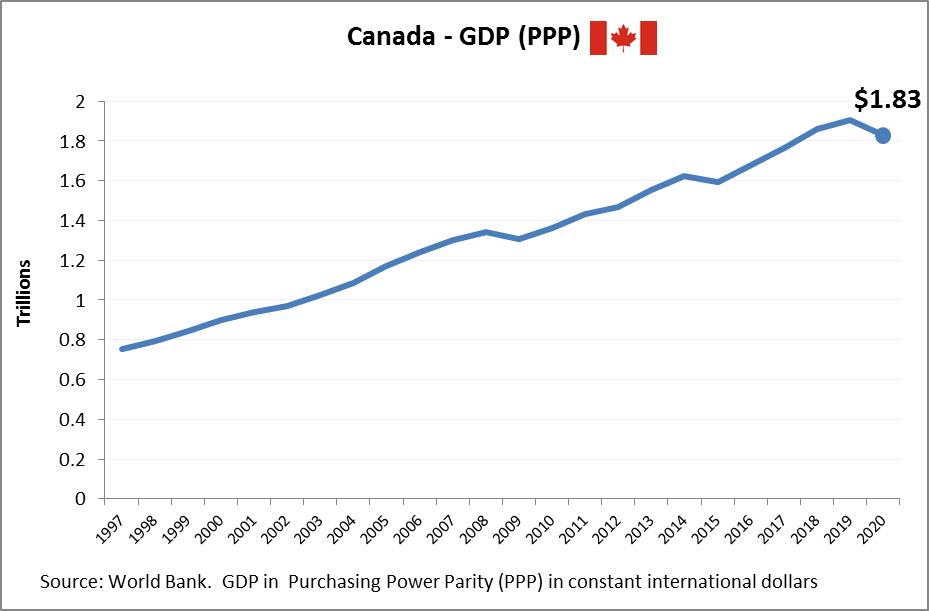United Kingdom economy size measured in Power Purchasing Parity, i.e. comparing relative standard of living and ability to afford goods and services. United Kingdom’s Gross Domestic Product (GDP) chart showing historical economic growth as measured in PPP international dollars.
United Kingdom: The United Kingdoms GDP PPP remains high, positioning it among the top global economies. With strengths in finance, technology, pharmaceuticals, and creative industries, the UK maintains a significant total output despite its smaller population compared to some economic rivals. Its per capita GDP PPP is also very high, indicating a wealthy, developed nation with high consumer purchasing power. Post-Brexit adjustments have introduced new challenges, but the country continues to benefit from strong institutions, a global business presence, and a highly skilled workforce.
